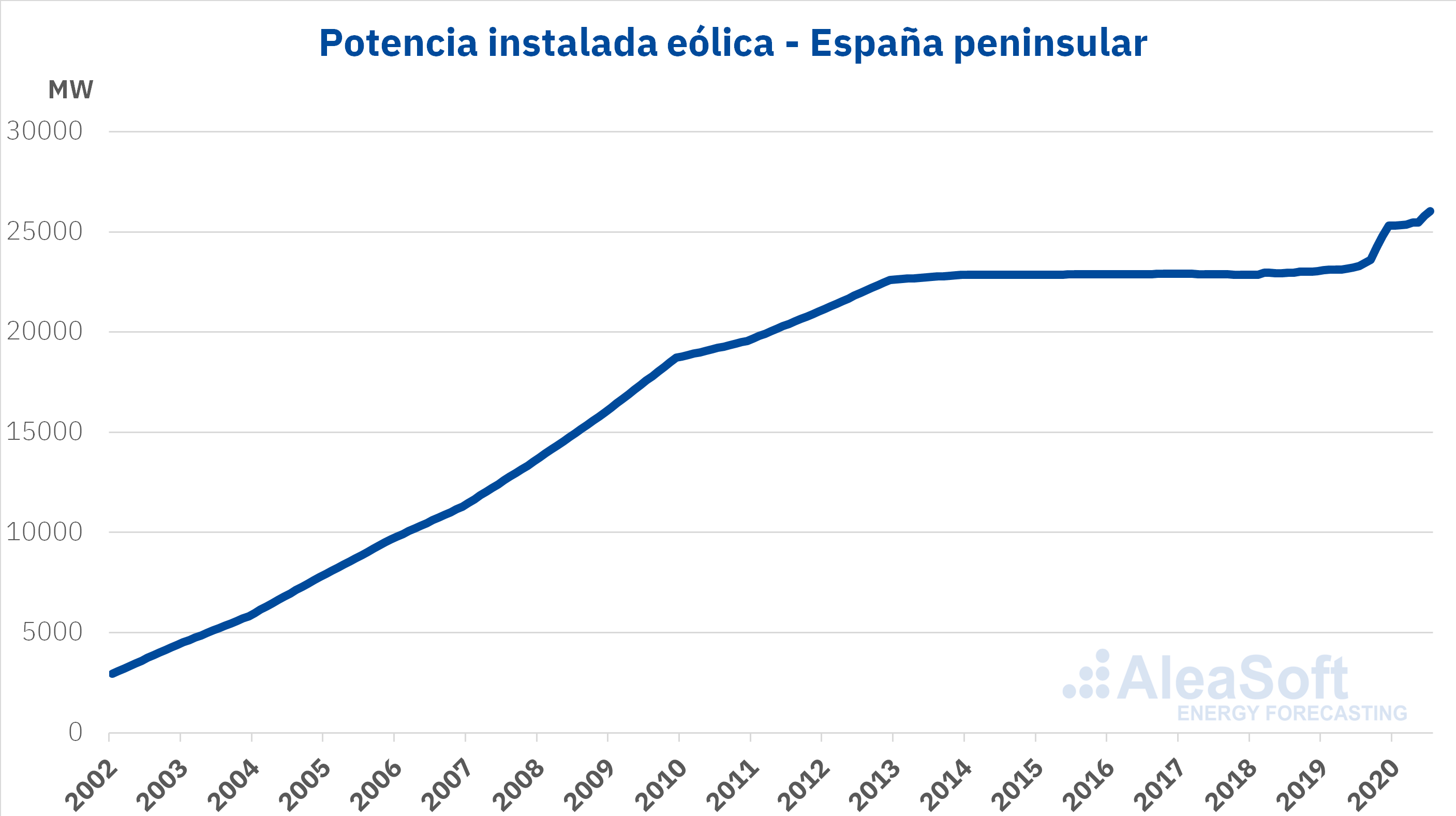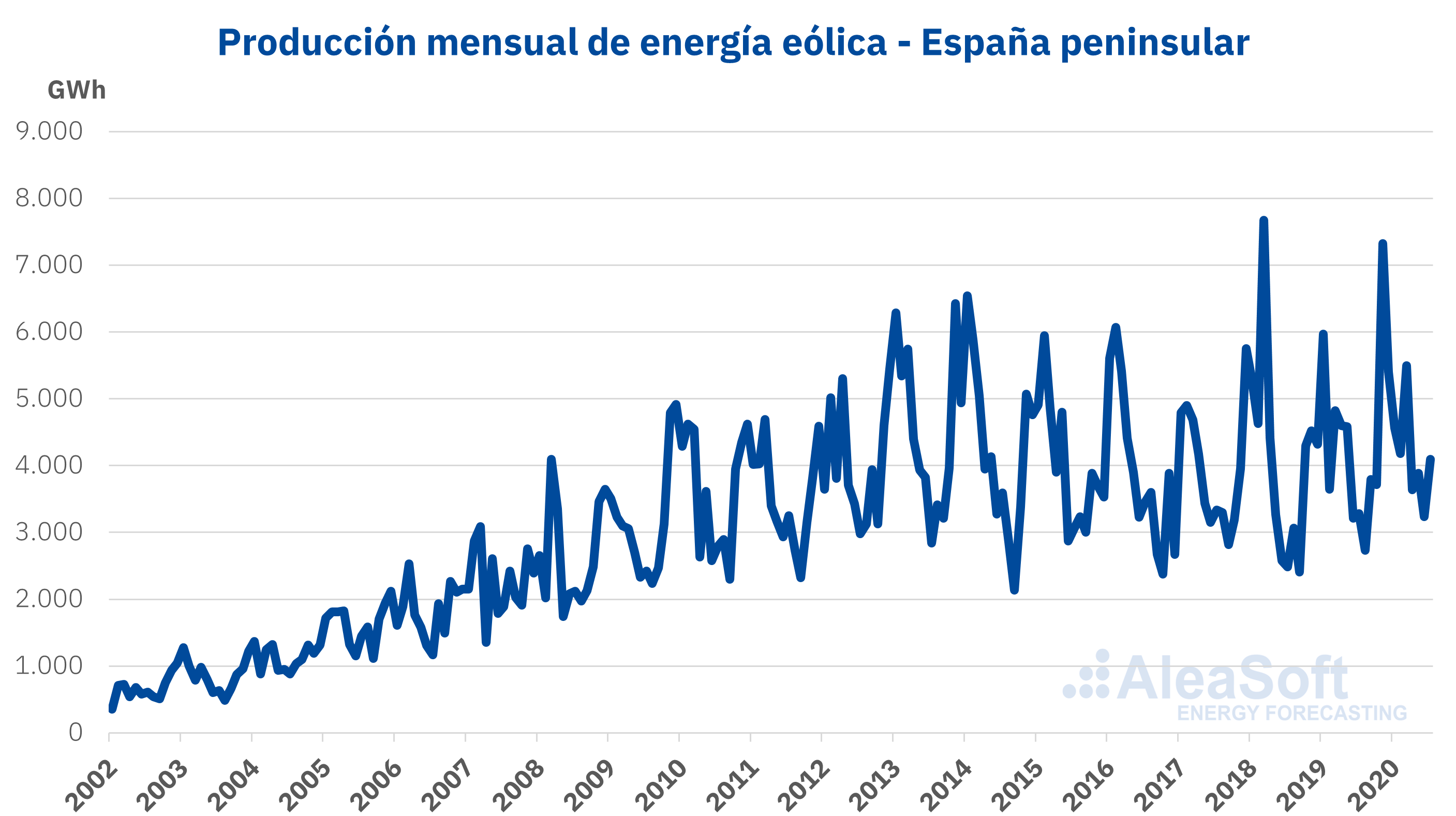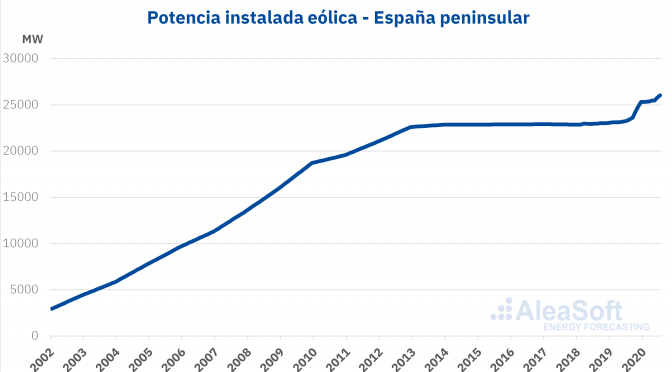The Spanish PNIEC aims for the installed wind power capacity in 2030 to reach 50 GW, almost a third of the total capacity expected on that date, and for it to be the technology with the highest installed power. After some years of stagnation, since the last quarter of 2019 the installation of new wind power has been reactivated, which has allowed it to reach this first position this July. Undoubtedly, this growth rate will allow us to achieve the established objective.
At the beginning of this year 2020, the Spanish Wind Energy Association (AEE) pointed out that wind power had exceeded 25,700 MW installed in 2019 in Spain. The most up-to-date data from Red Eléctrica de España (REE) place wind turbines capacity at the end of 2019 at 25,847 MW at the national level and at 25,413 MW in the peninsular territory. Undoubtedly, the year 2019 can be described as spectacular for wind farm, especially during the last quarter, taking into account that it had been more than five years of complete stagnation, even with some years where there were decreases in installed wind power .

Source: Prepared by AleaSoft with data from REE.
From October to December 2019, a streak of three consecutive months was chained with capacity growths above 2%, with a total increase of 1.7 GW in just three months. Extrapolating to 12 months, 7.1 GW / year, a rate that if maintained would allow the goal of the National Energy and Climate Plan (PNIEC) to be more than achieved, which places wind power in 2030 as the source of electricity generation with the most installed capacity nationwide, with 50 GW, almost a third of the capacity expected in the Spanish electricity mix on that date, followed by photovoltaics, with 39 GW.
Precisely in July 2020, wind power was ranked first in terms of installed power in Spain both nationally and on the peninsula, thanks to the fact that 632 MW were installed between January and July, surpassing combined gas cycles, which now they move to second place. The total installed capacity of wind energy reached 26,284 MW at the national level and 26,045 MW in the peninsula.
The 50 GW of the PNIEC for wind in 2030 also includes offshore wind, also known as offshore wind. The PNIEC does not specify specific objectives for the marine version of this technology, but it does recognize it as one of the most advanced technologies among which solid maturity has not yet been reached. The Plan recognizes that Spain has great potential for this technology, but that it still has to lower its costs and its environmental impact.
Globally, offshore wind is postulated as the main renewable technology to be promoted due to its high efficiency, which can double that of its terrestrial counterpart.
Regarding the generation with wind energy, the greater variability that this technology presents, compared for example with photovoltaic, means that at the moment no production records have been registered in this year 2020. The peninsular monthly production record stands in March 2018 with 7,676 GWh.

Source: Prepared by AleaSoft with data from REE.
The evolution of wind energy production in Spain in recent weeks, as well as the price and the rest of the variables of the Spanish market and the main European electricity markets, can be followed in the observatories on the AleaSoft website. For a more in-depth data analysis, with more granularity options and with all the historical data, AleaSoft is developing the Plus Platform that will soon be available in beta version for its clients.


